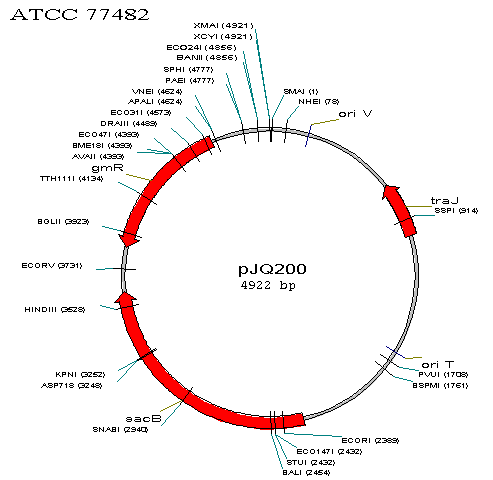Boston University/Plasmid Selection and Design
From 2007.igem.org
Plasmid Selection
submitted by Christian Ling
When selecting a suitable plasmid for our experiment our team decided to work backwards, in a sense, by thinking about our end product first in order to determine what qualities it is that our plasmid needs. Here is a short list of elements that we deemed as desirable in the plasmid to be selected:
- The plasmid CAN be properly replicated in S. oneidensis and will persist in future generations of transformed bacteria.
- The plasmid contains oriT and oriV for conjugal transfer of the plasmid from E. coli to S. oneidensis and vegetative replication following transfer, respectively.
- A minimal number of other major genes in order to avoid confounding of results due to extra or unexpected gene expression, or combinations of gene expression.
- A robust number of cleavage sites which will allow for the transposing of two genes into the plasmid.
With the above criteria in mind, the team agreed upon using plasmid pJQ200, sold by bioresource company ATCC [1], for the following reasons:
- Due to the presence of origin of replication p15A, plasmid pJQ200 will readily replicate in both E. coli and S. oneidensis. This facilitates the use of selection methods to "breed" high performing strains of S. oneidensis.
- pJQ200 contains oriT and oriV, allowing for conjugation.
- The only major genes listed by the ATCC for pJQ200 are sacB, gmR, and traJ.
- traJ refers to transfer genes which are necessary for conjugation to occur. However, the E.coli strain S17-1, which we will be using in conjugation, is already capable of conjugation. This makes the traJ gene redundant in the E.coli. Otherwise, in the transformed S. oneidensis traJ will not interfere with current production as it is only linked to conjugation.
- The gmR gene is actually undesirable as the strain of S. oneidensis we are using, MR-1, already contains gentamicin resistance. gmR in the plasmid would inhibit our ability to select for transformed S. oneidensis using double antibiotic control plates. Therefore, we will be capitalizing on the presence of restriction sites Tth111I and Eco31I (though during digestion we will be using BsaI, which is an isoschizomer of Eco31I) within the gmR gene to cut out the gene and insert a kanR gene.
- The sacB site confers lethal sucrose sensitivity in gram-negative bacteria/non-enterobacteria. S. oneidensis falls into this category. Since we intend on transposing the global transcription regulators into the sacB gene site (via restriction sites HindIII and EcoRI), we can select for integration of the transcription regulators into the sacB gene by incorporating sucrose into our agar plates.
- There are an excellent selection of restriction sites on pJQ200, as evinced by all the restriction sites mentioned above.
Here is a map of the plasmid with restriction sites and major genes marked.
